
Burkina Faso is a landlocked country in West Africa with an area of 274,223 km2 (105,878 sq mi), bordered by Mali to the northwest, Niger to the northeast, Benin to the southeast, Togo and Ghana to the south, and Ivory Coast to the southwest. As of 2021, the country had an estimated population of 20,321,378. Previously called Republic of Upper Volta (1958–1984), it was renamed Burkina Faso by President Thomas Sankara. Its citizens are known as Burkinabè, and its capital and largest city is Ouagadougou.

Idrissa Ouédraogo was a Burkinabé filmmaker. His work often explored the conflict between rural and city life and tradition and modernity in his native Burkina Faso and elsewhere in Africa. He is best known for his feature film Tilaï, which won the Grand Prix at the 1990 Cannes Film Festival and Samba Traoré (1993), which was nominated for the Silver Bear award at the 43rd Berlin International Film Festival.
The cinema of Burkina Faso is one of the more significant in Africa, with a history that spans several decades and includes the production of many award-winning films.

The Panafrican Film and Television Festival of Ouagadougou is a film festival in Burkina Faso, held biennially in Ouagadougou, where the organization is based. It accepts for competition only films by African filmmakers and chiefly produced in Africa. FESPACO is scheduled in March every second year, two weeks after the last Saturday of February. Its opening night is held in the Stade du 4-Août, the national stadium.
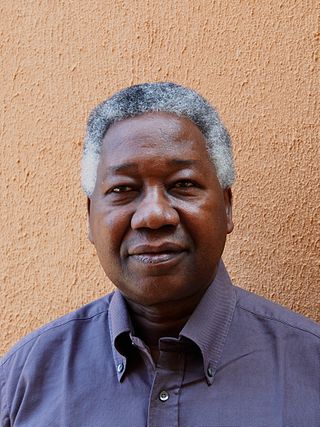
Gaston Kaboré is a Burkinabé film director and an important figure in Burkina Faso's film industry. He has won awards for his films Wend Kuuni and Buud Yam. He is the founder of Imagine Institute, a school he opened in Ouagadougou, Burkina Faso in 2003, that provides workshops and residencies for film and television professionals.

Cinema of Africa covers both the history and present of the making or screening of films on the African continent, and also refers to the persons involved in this form of audiovisual culture. It dates back to the early 20th century, when film reels were the primary cinematic technology in use. During the colonial era, African life was shown only by the work of white, colonial, Western filmmakers, who depicted Africans in a negative fashion, as exotic "others". As there are more than 50 countries with audiovisual traditions, there is no one single 'African cinema'. Both historically and culturally, there are major regional differences between North African and sub-Saharan cinemas, and between the cinemas of different countries.
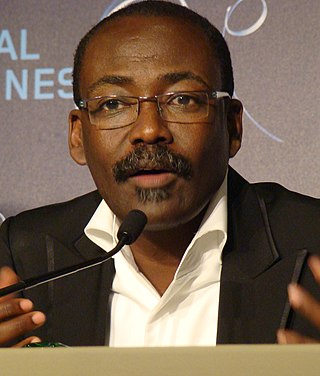
The Cinema of Chad is small though growing. The first film made in the country appears to have been 1958 John Huston adventure film The Roots of Heaven, filmed when the country was still a part of French Equatorial Africa. Documentary filmmaker Edouard Sailly made a series of shorts in the 1960s depicting daily life in the country. During this period there were a number of cinemas in the country, including in N'Djamena Le Normandie, Le Vogue, the Rio, the Étoile and the Shéherazade, and also the Rex in Sarh, the Logone in Moundou and the Ciné Chachati in Abéché. The film industry suffered severely in the 1970s-80s as Chad became engulfed in a series of civil wars and foreign military interventions; film production stopped, and all the cinemas in Chad closed down. Following the ousting of dictator Hissène Habré by Idriss Déby in 1990 the situation in the country stabilised somewhat, allowing the development of a nascent film industry, most notably with the work of directors Mahamat-Saleh Haroun, Issa Serge Coelo and Abakar Chene Massar. Mahamat-Saleh Haroun has won awards at the Panafrican Film and Television Festival of Ouagadougou, Venice International Film Festival and the Cannes Film Festival. In January 2011 Le Normandie in N'Djamena, said to now be the only cinema in Chad, re-opened with government support.
Sarah Bouyain is a French-Burkinabé writer and film director. Her first full-length film, The Place in Between, was released in 2010.
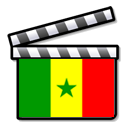
The cinema of Senegal is a relatively small film industry which experienced its prime from the 1960s through to the early 1980s, but has since declined to less than five feature films produced in the last ten years. Senegal is the capital of African cinema and the most important place of African film production after its independence from France in 1960.
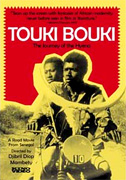
Unir Cinéma: Revue du Cinéma Africain was the first periodical entirely devoted to African cinema to come out of Francophone Africa. Its impact established it as an essential reference tool on cinema on the continent.
Mahama Johnson Traoré (1942–2010) was a Senegalese film director, writer, and co-founder of the Ouagadougou-based Pan-African Cinema Festival (FESPACO).
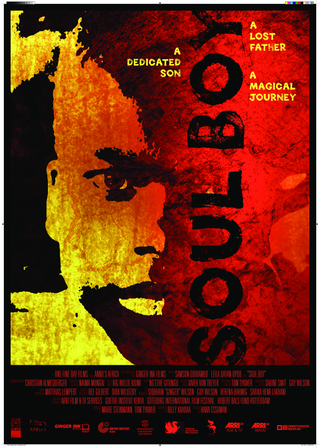
Soul Boy is a 2010 Kenyan drama film, written by Billy Kahora and directed by Hawa Essuman. It developed under the mentorship of German director and producer Tom Tykwer in Kibera, one of the largest slums in the African continent, in the middle of Nairobi, Kenya. The film has received five nominations at the 2011 Africa Movie Academy Awards.
The Cassava Metaphor is a 2010 film.
Nii Kwate Owoo is a Ghanaian academic and filmmaker, described by Variety as "one of the first Ghanaians to lense in 35mm". His name has also appeared in film credits as Kwate Nee-Owoo.
Achille Brice is a Cameroonian filmmaker, producer and movie director. His work in Life Point was recognized among the 20 of 1,000 movies submitted to contest at l'Étalon d'or de Yennenga at the Pan African Film Festival in Ouagadougou, Burkina Faso. In 2011, he received three nominations as best filmmaker in Cameroon at the Zulu African Film Academy Awards for Obsession, the first Cameroonian English language film to be nominated in the Ecrans Noirs Film Festival for Ecrans D'Afrique Central, Prix Charles Mensa at the CRANS Noir Film Festival. He is the founder of BinAm Studios, an open forum for filmmakers to share and advertise their product.

Maimouna N'Diaye is a Franco-Burkinabe actress and film director. She is best known for her leading role in the film Eye of the Storm (2015), for which she received critical acclaim.
Mamadou Djim Kola was an Burkinabe filmmaker who directed feature films and short films.
Katy Léna N'diaye is a Senegalese-French journalist and documentary filmmaker, best known for her documentaries about women muralists in Africa.
Elvire Adjamonsi is a Beninese filmmaker, actor, journalist and cultural developer. She is known for her documentary films and for her work in creating and managing film festivals and cultural institutions across Africa.
Ecrans Noirs Festival is a film festival in Yaoundé, Cameroon. It has been characterized as "Central Africa's largest cinema event".









